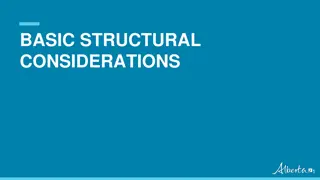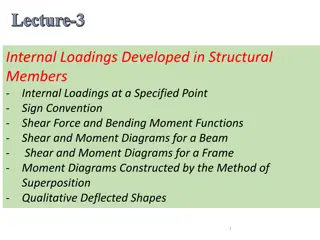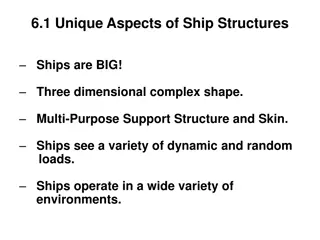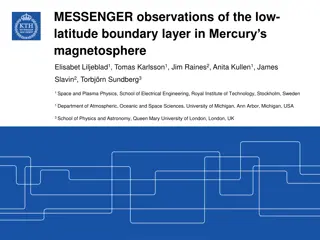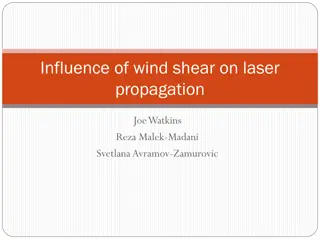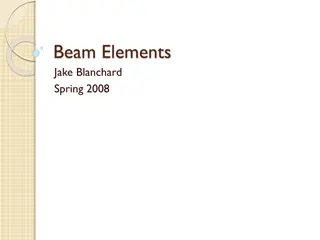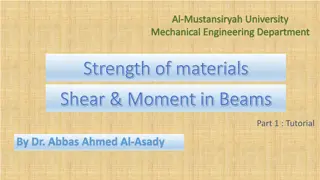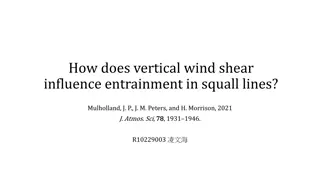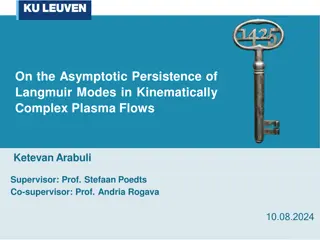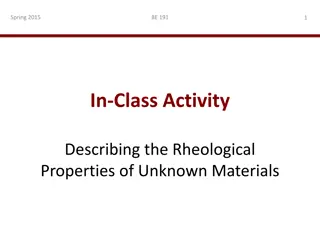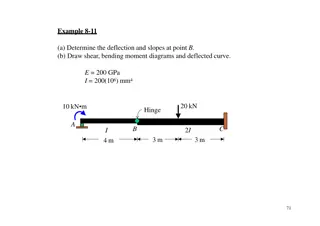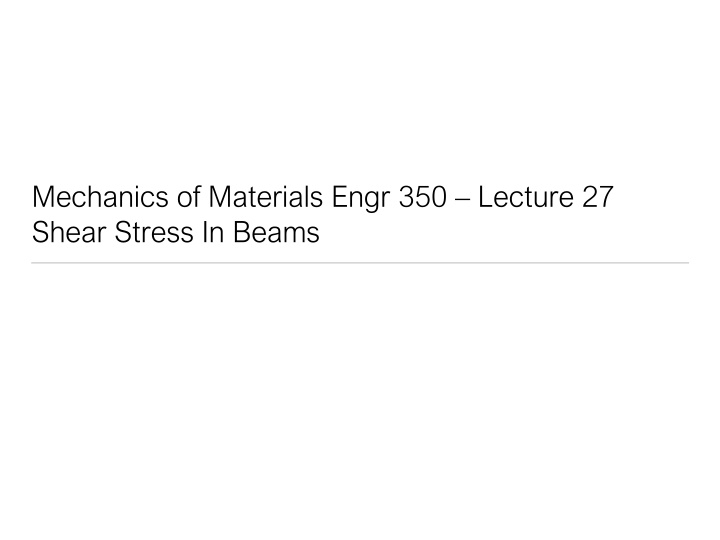
Shear Stress in Beams: Understanding and Deriving Formulas
Explore the concept of shear stress in beams, the distribution resulting from bending moments, and the derivation of shear stress formulas in mechanics of materials. Understand the role of transverse shear forces and how they contribute to equilibrium in beams.
Download Presentation

Please find below an Image/Link to download the presentation.
The content on the website is provided AS IS for your information and personal use only. It may not be sold, licensed, or shared on other websites without obtaining consent from the author. If you encounter any issues during the download, it is possible that the publisher has removed the file from their server.
You are allowed to download the files provided on this website for personal or commercial use, subject to the condition that they are used lawfully. All files are the property of their respective owners.
The content on the website is provided AS IS for your information and personal use only. It may not be sold, licensed, or shared on other websites without obtaining consent from the author.
E N D
Presentation Transcript
Mechanics of Materials Engr 350 Lecture 27 Shear Stress In Beams
Bending stresses and equilibrium Consider the segment of beam in textbook problem 8.21 from 2 ft to 4 ft Bending moment M= 2ft 4ft M= M 4in 6in end view Bending stress distribution resulting from moment V M 2
Bending stress distribution resulting from moment (repeated) Bending stress distribution Consider the top 2 of the beam Recall that if a body is in equilibrium any portion of that body must also be in equilibrium Since the axial forces on each side of a segment of a beam that is NOT in pure bending are not equal, another force must be present in order to maintain equilibrium. This is the transverse shear force 3
Transverse shear Transverse shear is also called axial or horizontal shear The difference in bending moment from the left side of the beam to the right side of the beam is what creates the need for the transverse shear force. If the bending moment were constant along a beam segment, there would be no horizontal shear force within the material. Pop out to MM Module 9.1 4
Deriving the shear stress formula Consider a beam with arbitrary loadings and cross-sectional profile as shown A section of the beam has internal shear and bending moments, which result in bending stresses. The area above the point y1 (called A ) has some distribution of bending stresses on it. Recall that the bending stress equation is: ??=?? ? 5
Shear stress formula continued We can apply equilibrium to the section above y1(A ) 7
Shear stress formula part III We have developed an expression for the shear force. Since stress is defined as a force divided by the area over which it acts, the transverse shear stress is found by dividing the shear force by the area (area=t*?x not A ) Recall from V and M diagrams that ?? ??= ? 8
Example Problem For the cross section at a-a determine the magnitude of the shear stress at point H. The value of Q at point H is 108 in3 The max value of Q is 168.75 in3 ? 3 12 Remember, Izfor a rectangle is ??= V M 9


